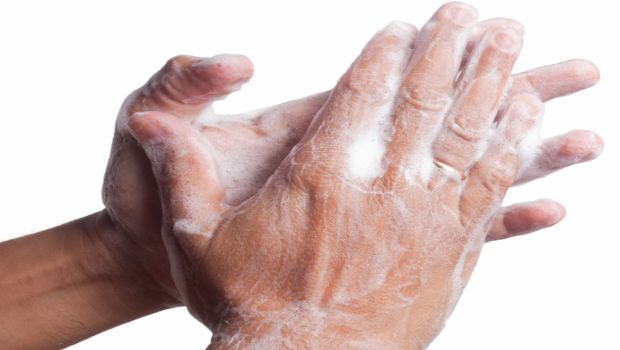Six-Step Handwashing Technique Found Most Effective for Reducing Bacteria

New research demonstrates that the six-step hand-hygiene technique recommended by the World Health Organization is superior to a three-step method suggested by the Centers for Disease Control and Prevention (CDC) in reducing bacteria on healthcare workers’ hands. The study was published online today in Infection Control & Hospital Epidemiology, the journal of the Society for Healthcare Epidemiology of America.
"Hand hygiene is regarded as the most important intervention to reduce healthcare-associated infections, but there is limited evidence on which technique is most effective,” said Jacqui Reilly, PhD, lead author of the study and professor of infection prevention and control at Glasgow Caledonian University in Scotland. “This study provides a foundation for effective best practices to implement on the frontlines of healthcare.”
During the randomized controlled trial in an urban, acute-care teaching hospital, researchers observed 42 physicians and 78 nurses completing handwashing using an alcohol-based handrub after delivering patient care. The six-step technique was determined to be microbiologically more effective for reducing the median bacterial count (3.28 to 2.58) compared to the three-step method (3.08 to 2.88). However, using the six-step method required 25 percent more time to complete (42.50 seconds vs. 35 seconds).
“One of the interesting incidental findings was that compliance with the six-step technique was lacking. Only 65 percent of providers completed the entire hand hygiene process despite participants having instructions on the technique in front of them and having their technique observed. This warrants further investigation for this particular technique and how compliance rates can be improved,” said Reilly.
The researchers recommend authors of international guidance should consider this evidence when making official recommendations on best practices in hand hygiene.
Reference: Jacqui Reilly, Leslie Price, Sue Lang, Chris Robertson, Francine Cheater, Kirsty Skinner, Angela Chow. “A pragmatic randomized controlled trial of 6 step versus 3 step Hand Hygiene technique in acute hospital care.” Web (March 31, 2016).
The Guardians of Animal Health: Who Are Veterinary Infection Preventionists?
March 21st 2025Veterinary infection control experts Leslie Kollmann, BS, AAS, CVT, CIC, Denise Waiting, LVT, and Leslie Landis, LVT, BS, discuss challenges, zoonotic disease risks, and the importance of education, collaboration, and resource development in animal care facilities.
The Latest on CLABSIs and CAUTIs: Evidence-Based Approaches for Infection Prevention
February 27th 2025Health care–associated infections like CLABSIs and CAUTIs threaten patient safety. Learn evidence-based strategies, new technologies, and prevention protocols to reduce these infections and improve outcomes.
Resilience and Innovation: The Pivotal Contributions of Black Americans to Health Care and Medicine
February 24th 2025During Black History Month, we honor the resilience and contributions of Black medical professionals in health care. Despite barriers, they have led transformative changes, advocating for equitable access and medical excellence. Recognizing their impact ensures a more inclusive health care future for all.
Glove Usage Guideline: From The Joint Commission, CDC, and World Health Organization
February 17th 2025Proper glove use is crucial in health care settings to prevent infections. Guidelines from TJC, CDC, and WHO stress correct selection, usage, and disposal to minimize health care–associated infections (HAIs) and cross-contamination risks. Infection preventionists (IPs) play a key role in educating staff, enforcing compliance, and improving patient safety through standardized glove practices.